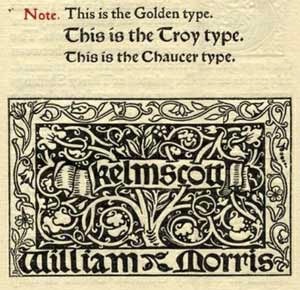Artsy Type vs Fartsy Type
With the advent of the industrial revolution, the steam engine and the printing press allowed jobbing printers to produce material faster and cheaper than ever before. However, it came with some caveats. With such a focus on speed and volume of production, results were often inferior and lacked refined craftsmanship. Such efficiency resulted in the loss of jobs for punch cutters, type casters, type setters, and printers. Wood pulp was used to produce acidic paper that was prone to yellowing.

Design-wise, typography became stagnant and very utilitarian. Serifs became stronger with the introduction of slab-serifs.
(or egyptienne, as they were called due to Napoleon Bonaparte’s invasions into Egypt)
Strong serifs prevented damage to the movable or metal type. Slab-like serifs were bold, loud and attention grabbing which was the motive for jobbing printer typographers as they were used for advertisements, title pages, and newspapers.
The Arts and Crafts movement started as a reaction to the poor aesthetic quality of typography of the industrial revolution. With roots in gothic romanticism, the Arts and Crafts movement was figureheaded by William Morris who believed that the Industrial Revolution had killed man’s joy in his work and that mechanization, by destroying handicraft, had brought ugliness with it. Morris believed contemporary means of production was inferior than what could be achieved by a craftsman’s handiwork based on the old style techniques.
Morris created 3 typefaces: Golden Type (which was based on the Venetian typeface by Jenson), Troy type (which was based on Gutenberg’s Blackletter type), and Chaucer type.
Frederic Goudy was a type designer, among many other things, during the Arts and Crafts movement as well. He would have 90 typefaces cut and casted and many more completely designed typefaces. His most famous typefaces are Goudy Oldstyle and Copperplate Gothic. He is the third most prolific type designer in the United States.
This struggle between efficient utilitarianism and authentic expression would eventually lead to Art Nouveau in Britain.
William Morris even has a fan club!
Sources
- Meggs’ History of Graphic Design 5e by Philip B. Meggs, Alston W. Purvis
- The Kelmscott Press: A History of William Morris’ Typographic Adventure by William S. Peterson
- https://multimediaman.blog/2014/03/14/william-morris-1834-1896/#comments
- https://www.utoledo.edu/library/canaday/exhibits/artsandcrafts/roots.html
- https://visualartsdepartment.wordpress.com/arts-crafts/
- https://opentextbc.ca/graphicdesign/chapter/chapter-2/
- https://letterpresscommons.com/history-of-job-printing/#Resources
- http://www.artyfactory.com/graphic_design/graphic_designers/william_morris.html
- http://www.designhistory.org/Arts_Crafts_pages/IndustrialRevolution.html


